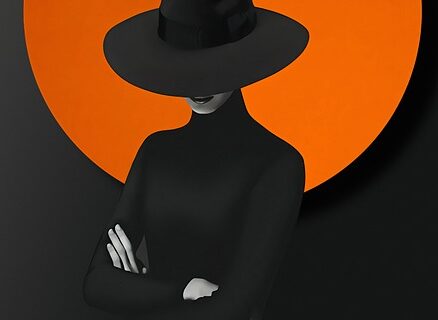What is hook writing? It’s a method of grabbing your reader’s attention and pulling them into the story. There are many different hooks, but each one serves the same purpose: to keep your reader engaged. In this blog post, we will discuss six different types of hooks and how to use them in a thriller novel.
It would be best to have a hook in your thriller novel because your readers will likely lose interest and put your book down without a hook.
A hook is so important in a thriller novel because a thriller is a genre that is all about suspense, mystery, and action. You need to hook readers from the very beginning and never let go. A hook can be anything from a quote from a famous person in the first sentence to a shocking plot twist.
Here are a few of the most popular hook types:
1. The question hook
This hook shows how to create a sense of intrigue.
This type of hook questions the reader directly related to the topic or raises questions about the implications of the issue being discussed. For example, a hook about gun control might ask, “What would you do if you were in a room with an active shooter?”
Asking a question is a great way to hook your reader because it immediately creates a sense of intrigue. In addition, the reader will want to know the answer to the question, which will keep them reading. You can ask a question at the beginning of your novel or drop hints throughout the story that eventually lead to a big reveal.
Here are some examples of questions you could use to hook your reader:
– What is the protagonist’s dark secret?
– Who is the real killer?
– What is the government hiding?
– What treasure does the protagonist seek?
2. The quotation hook
This hook uses famous quotes or lyrics to add flavor and interest to your story.
As the name suggests, this hook features a quotation from either a primary or secondary source. The key here is to make sure that the quotation is relevant and exciting. A dull or uninteresting quote will only serve to bore your reader.
This hook can be overused, so make sure you only use it if it fits your novel’s tone. If done well, a quotation hook can add depth to your story and give the reader something to think about long after they’ve finished reading.
Here are some examples of quotations you could use:
“We are all broken; that’s how the light gets in.” – Ernest Hemingway
“There is no greater agony than bearing an untold story inside you.” – Maya Angelou
“When you want something, all the universe conspires in helping you to achieve it.” – Paulo Coelho
“You’re gonna need a bigger boat.” – Jaws
“The truth is sometimes stranger than fiction.”
“There’s no such thing as a perfect crime.”
“We all have our secrets.”
“Everyone has their price.”
3. The statistic hook
This hook adds shocking or unexpected statistics to capture the attention.

For example:
– Every year, there are an average of 36,000 deaths caused by automobile accidents.
– Approximately one million people die from smoking each year.
– There are approximately 650,000 deaths due to heart disease each year in the United States.
– Every day, there are about 16,000 murders worldwide.
While these statistics may be shocking, it’s essential to make sure that they are accurate and from a reliable source. Adding false or exaggerated information will only serve to discredit your work.
And then, there is a statement hook to start a conversation. It’s a short, exciting sentence that captures the other person’s attention and makes them want to hear more. For example, “Did you know that dolphins are one of the smartest animals on Earth?” or “I just moved here from San Francisco, and I love it!”
4. The anecdotal hook
This hook is when the author tells a story related to the topic of the novel.

It can be a personal story or a story that the author has heard.
The anecdotal hook is designed to seize your listeners’ attention and keep them engaged throughout the entire story. Here’s an example of how an anecdotal hook might sound in conversation:
“Remember when we were visitors in Japan and tried to communicate with the locals using only charades? It was hilarious! We got more confused as time went on, but man, did we have a good time.”
In this case, the speaker uses an anecdote to engage the audience by reminiscing about a shared experience. This is a great way to create rapport and build relationships with others. If you can find common ground with someone through stories like this, they’re more likely to trust you and want to listen to what you have to say.
For example:
– I was walking home from work one night when I saw a man in an alleyway attacking a woman.
– A drunk driver killed my friend’s teenage son.
– I read about a woman who was kidnapped and held for ransom.
Stories like these hook the reader because they are personal and relatable.
They also make the reader curious to find out what happens next.
A good hook will leave the reader wanting more.
5. The statement hook
This hook is when the author tells something unexpected.
For example:
– I’m not afraid of snakes.
– I love winter.
– I don’t believe in ghosts.
A statement hook is a great way to start a conversation. It’s a short statement that grabs the other person’s attention and makes them want to know more. For example, “I can’t believe it’s been raining all week!” or “This is my first time in Seattle.” It’s a quick, easy way to get the ball rolling and start chatting.
Or it might be a good-looking stranger at the airport, waiting for his flight, asking, “Hey, do you want to grab a coffee? I’d love to chat with you.” It’s non-intrusive and allows the other person to either say yes or no without feeling like they’re being pressured. Plus, it gives you a chance to get better to know the other person.
Statements like these hook the reader because they are unexpected and make them want to learn more about the character.
6. The cliffhanger hook
This hook adds suspense to the story and leaves the reader wondering what will happen next.

It is often used at the end of a chapter or novel to make the reader want to read more.
Cliffhangers are often used in television shows and movies as well.
For example:
– In the movie The Sixth Sense, the character Cole finds out that he can see dead people. The film ends with him talking to his therapist about it, and the audience is left wondering if the therapist will believe Cole or not.
Recent examples include the season finale of AMC’s Breaking Bad, when Walter White finally broke bad himself, or the season finale of NBC’s The Sound of Music Live! when Carrie Underwood’s character was unexpectedly shot.
Some common cliffhanger hooks include:
– A character being in danger
– A mystery that needs to be solved
– Someone being revealed as a traitor
– The outcome of a battle or competition
– Someone making a shocking discovery
Cliffhangers are a great way to hook the reader and keep them coming back for more.
So, those are some of the most common hooks.
How to make sure your hooks are effective and engaging?
First, make sure your hook is relevant to the overall topic of your piece. A random or off-topic hook is likely to quickly lose your reader’s attention.
Second, try to be creative and unique in your approach. Don’t recycle the same old worn-out hooks that everyone else uses – come up with something new and fresh that will grab your reader’s attention.
Finally, keep it short and sweet. The best hooks are usually relatively brief – just a sentence or two. If you ramble on for too long, you’re likely to lose the reader’s interest.
Examples of well-crafted hooks from some of the best thriller writers around:
“The first time I saw her, I knew she was going to be trouble.” (James Patterson)
“I’m not going to tell you my name. I’m not going to tell you where I live. And I’m definitely not going to tell you what I did.” (Harlan Coben)
“Late one night, I got a call from the police. It was my daughter.” (from The Girl with the Dragon Tattoo by Stieg Larsson)
“The last thing I remember is standing in the kitchen, pouring myself a drink.” (from Gone Girl by Gillian Flynn)
Conclusion
So, how do you know which hook is right for your thriller novel? The best way to find out is to experiment with different hooks and see what works best for your story.
Start by thinking about the tone of your book and what type of reader you are trying to attract. Try out a few hooks and see how they work once you have a good idea of what you want your book to accomplish. If something isn’t working, change it until you find the perfect hook that draws in readers and keeps them hooked until the end.
Write a lot, and get feedback from others. The more you write, the better you’ll get at it. Your writing skills will improve, and you’ll also become better at thinking critically and expressing yourself clearly.
Be patient with yourself and have fun with it 🙂
If you’re working on your first novel and are looking for more help with your writing, please check out our other articles at https://ullahakanson.com/blogs/
Best of luck with your writing!
Ulla

